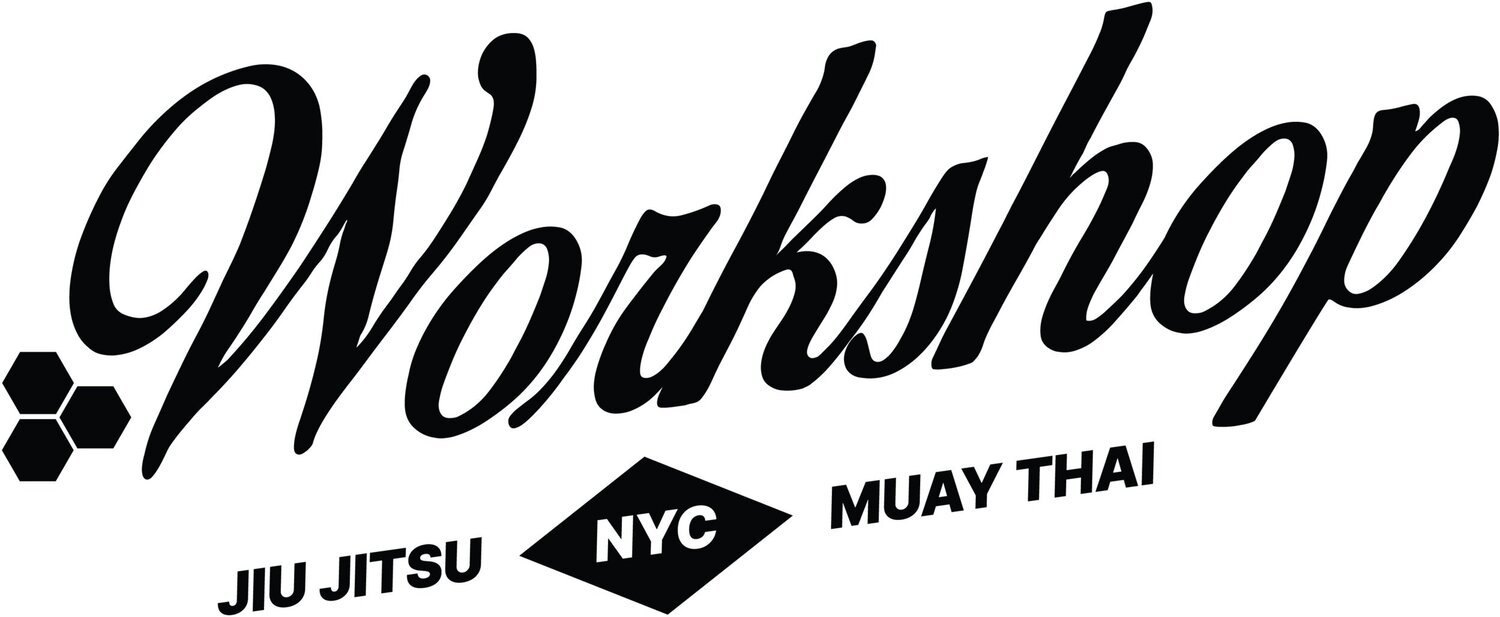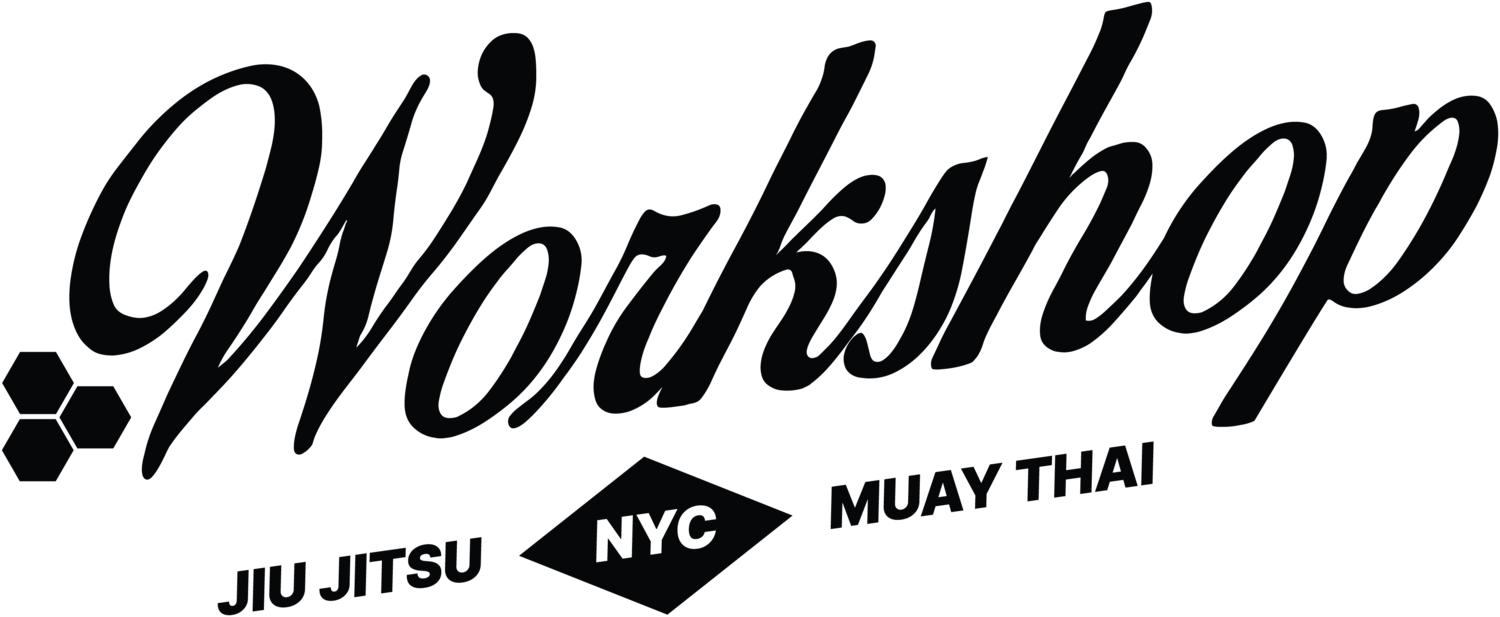
WORKSHOP JIU-JITSU
The Jiu Jitsu taught at Workshop NYC is predicated upon the maxim that jiu jitsu is the art of control that leads to submission. All of our students are expected to be well versed in both mat-work and take-down techniques. Contrary to what one might expect of an MMA match, jiujitsu practice is purely grappling with no strikes allowed. Class structure and curriculum are dependent on what level class you will be attending.
JIU-JITSU HISTORY
Brazilian Jiu Jitsu is a grappling based martial art that is built around the idea of control as a primary factor for victory in combat. In Jiu Jitsu this is usually accomplished through a take-down where an opponent is thrown or wrestled to the mat. The practitioner will then maneuver themselves into advantageous positions of mechanical advantage where submission-holds can applied.
The history of Brazilian Jiu Jitsu like many martial arts is mired in myth and suspect record keeping. As a relatively modern art with its roots in Brazil and Japan, there is much speculation as to who the major players were in its origins and how the art developed. Several facts that are known is that in the early 20 th century a Judo/Kano Ju-Jutsu (interchangeable names during this time period) practitioner by the name of Mitsuyo Maeda (Conde Koma) traveled to Brazil. He was a prize fighter who also taught Kano Ju-Jutsu to supplement his income.
There were other Japanese Ju-Jutsu fighters at the time in Brazil,
such as Geo Omori who predated Maeda but their involvement with teaching and popularizing the art were not as well documented, nor did they reach the notoriety of Conde Koma. Arguably the most influential person in the rise of Brazilian Jiu Jitsu and best known
student of Maeda, Carlos Gracie began his studies at Conde Koma’s academy in Belem around 1916. He studied with Maeda for a short period and then passed his knowledge to his brothers Helio, Jorge, Osvaldo, and Gastao, after moving from Belem to Rio De Janeiro with his family.
Carlos and his brothers, Helio in particular, were instrumental in the development of modern Brazilian Jiu Jitsu through numerous prize and challenge fights. Their victories and losses were noted and published in newspapers around Rio De Janeiero and Brazil. In
addition to Carlos and his brothers, other notable names in the early origins of Brazilian Jiu Jitsu were Luiz Franca, who also studied under Mitsuyo Maeda, and Franca’s student Oswaldo Fadda.
After years of demonstrating Jiu Jitsu’s superiority in unarmed combat in Brazil,
members of the Gracie family transitioned to the United States in the early 1980’s and were instrumental to the development and popularization of modern Mixed Martial Arts. Eerily similar to Jiu Jitsu’s rise to prominence in the prize fighting circuit and challenges fights of Brazil during the early to mid 20 th century, Brazilian Jiu Jitsu found itself front and center in the first UFC’s and MMA events of the early 1990’s. With fighters such as Royce Gracie in the UFC, Renzo Gracie in the WCC, and Rickson Gracie in Vale Tudo Japan, the Gracie family again brought Brazilian Jiu Jitsu to the forefront of unarmed combat for the modern world to
see. With the ever-growing popularity of MMA, jiu jitsu is enjoying a worldwide renaissance and growth that hasn’t been seen before in its short history.





